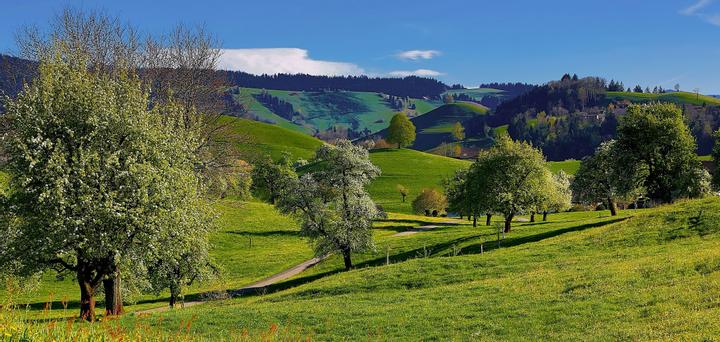
Lokale Zutaten
Was meint ihr mit "lokalen Zutaten"?
Wenn wir bei Rezepten von lokalen Zutaten sprechen, meinen wir damit Zutaten, die zwei Bedingungen erfüllen:
- Es gibt Produzenten (z.B. Landwirte) in der Schweiz, welche die Zutat lokal (innerhalb der Schweiz) anbauen, züchten oder herstellen.
- Falls die Herstellung der Zutat an eine bestimmte Saison gebunden ist, dann muss sich die Zutat aktuell in dieser Saison befinden.
Die Abhängigkeit von der Saison bedeutet, dass manche Zutaten während gewissen Zeiten als lokal gelten und während anderen Zeiten nicht als lokal gelten. Daher ist zum Beispiel Pouletfleisch immer eine lokale Zutat, da es während des ganzen Jahres in der Schweiz hergestellt wird, Blumenkohl nur zwischen Mai und November lokal, da das Gemüse in dieser Zeit Saison hat, und Kokosnuss nie lokal, da sie in der Schweiz nicht angebaut wird.
Was bedeutet der % lokal Wert in den Rezepten?
Der Lokal-Indikator (% lokal) gibt an, wie hoch der Prozentsatz von lokalen Zutaten gemessen an allen Zutaten eines Rezepts ist. Der Vergleich findet dabei auf Basis des Gewichts der Zutaten statt. Wenn ein Rezept beispielsweise aus 300 Gramm lokalen Zutaten und 200 Gramm nicht-lokalen Zutaten besteht, dann ist der Lokal-Indikator 60% (300g geteilt durch 500g). Da sich die lokalen Zutaten je nach Saison ändern können, kann sich auch der Lokal-Indikator eines Rezepts über das Jahr hinweg ändern.
Woher kommen die Daten für den Lokal-Indikator?
Die Daten zur inländischen Produktion und der Saisonalität von Zutaten stammen von verschiedenen Verbänden und NGOs, z.B. die WWF Saisontabelle für Früchte und Gemüse und der Bio Suisse Saisonkalender.
Was gibt es zu beachten bei der Interpretation des Indikators?
Wenn du den Lokal-Indikator bei Rezepten anschaust, bedenke, dass es sich lediglich um eine Indikation handelt, die dir helfen kann, mit lokaleren und nachhaltigeren Produkten zu kochen. Die Realität hinter der Zahl ist aber, wie bei allen Indikatoren, ein Stück komplizierter. Folgende Punkte solltest du daher im Hinterkopf behalten:
- Die Saison von lokalen Zutaten ist gewissen Variationen unterworfen und kann nicht taggenau bestimmt werden.
- Als geografische Referenz für lokale Zutaten haben wir die gesamte Schweiz gewählt. In Realität gibt es nicht-lokale Produkte, welche, je nach genauem Ort in der Schweiz, in geografisch näherliegenden Orten im angrenzenden Ausland hergestellt werden können, während gewisse lokale Produkte nur in einer geografisch weiter entfernten Region der Schweiz hergestellt werden.
- Selbst wenn eine Zutat lokal produziert werden kann und aktuell in Saison ist, können Geschäfte importierte Varianten der Zutat anbieten. Wie lokal das gekochte Rezept am Ende ist, hängt also stark davon ab, ob auch tatsächlich die lokal produzierten Varianten der Zutaten gekauft werden.
- Wo Zutaten produziert werden ist nur einer von vielen Nachhaltigkeitsaspekten bei Rezepten. Wie die Produkte produziert werden macht einen grossen Unterschied: Versuche, dich für biologisch produzierte Zutaten zu entscheiden.
Wie kann ich euch über eine falsche % lokal Anzeige informieren?
Wenn du eine inkorrekte oder veraltete Information zu lokalen Zutaten siehst, melde sie uns bitte über das Kontaktformular unten, damit wir sie korrigieren können. Danke für deine Unterstützung!
Inkorrekte Informationen? Alte Daten? Etwas scheint nicht ganz richtig zu sein mit dem Indikator? Lass es uns wissen mit diesem Formular. Vielen Dank!